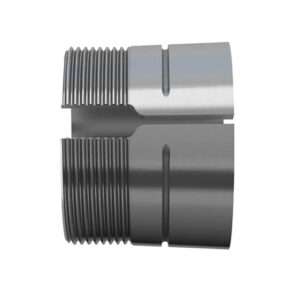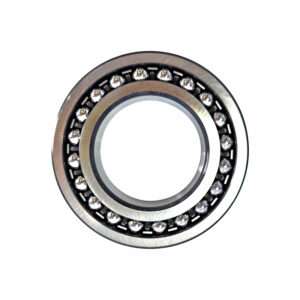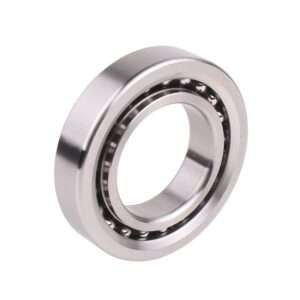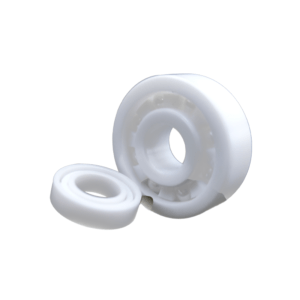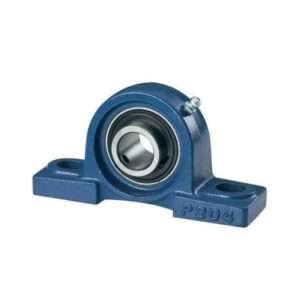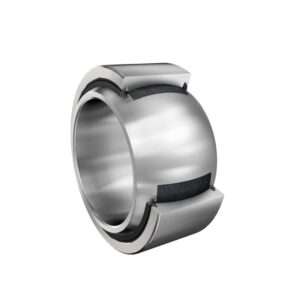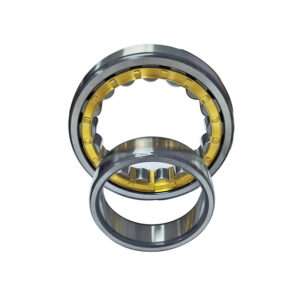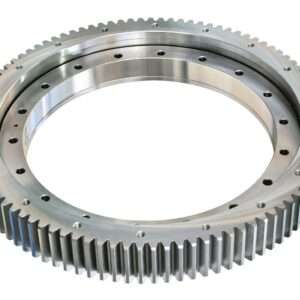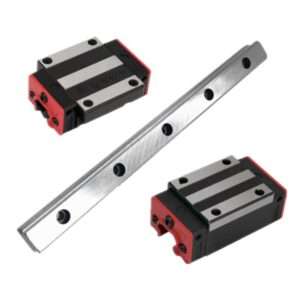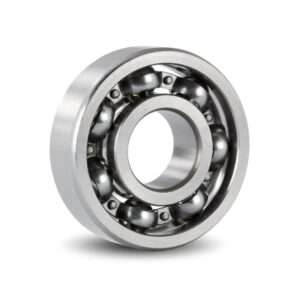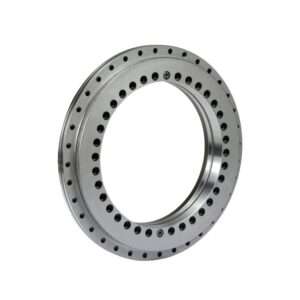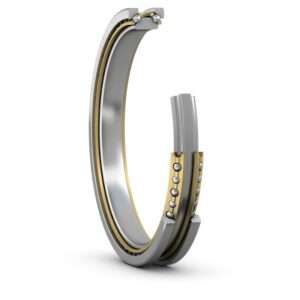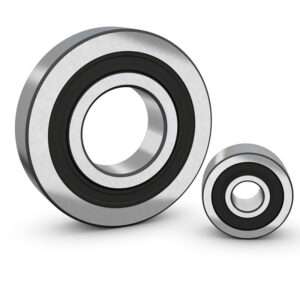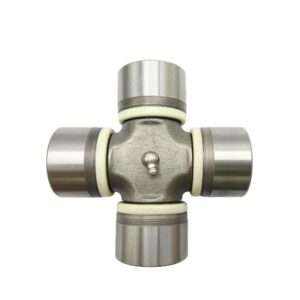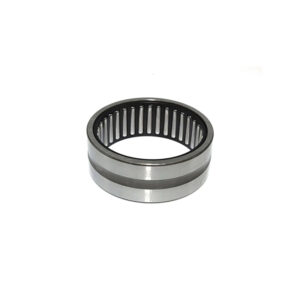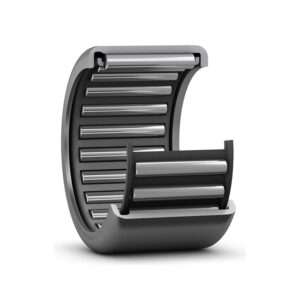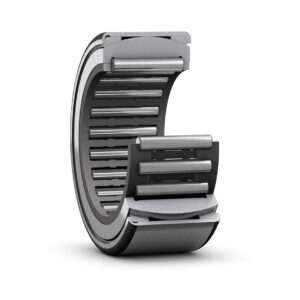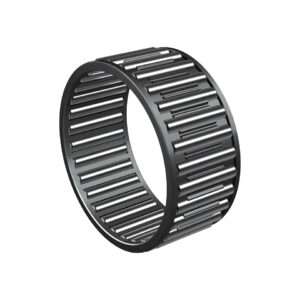Needle Roller Bearings
Table of Contents
Categories
Definition of Needle Roller Bearings
Needle roller bearings are precision-engineered rolling elements with cylindrical rollers that have a high length-to-diameter ratio. They provide efficient radial load support in confined spaces, commonly used in automotive and industrial applications for smooth and precise rotational motion.
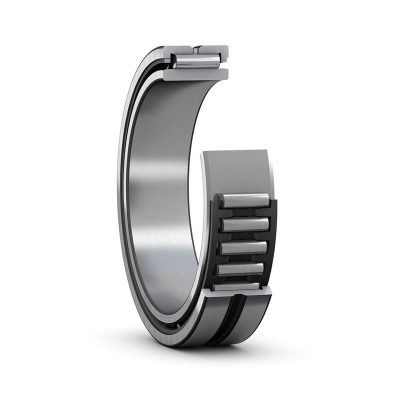
FHD Bearings is an ISO 9001:2015 certified manufacturing enterprise that stsock a full range of Cylindrical Roller Bearings,Tapered Roller Bearings,Spherical Roller Bearings,Needle Roller Bearings,Thrust Roller Bearings and Crossed Roller Bearings. With over 1,200 different bearing sizes and over 250K bearings in stock.
Materials of Needle Roller Bearings
Bearing Steel
Ensures high strength, hardness, and wear resistance, making it suitable for outer and inner rings as well as rollers, providing durability and load-bearing capacity.
Stainless Steel
Offers corrosion resistance, making it suitable for rollers in applications where environmental conditions may compromise bearing integrity.
Steel Cage
Provides structural support, maintaining proper roller alignment, load distribution, and overall bearing stability.
Bronze Cage
Withstands high temperatures, making it suitable for applications where traditional steel cages might not be effective due to heat.
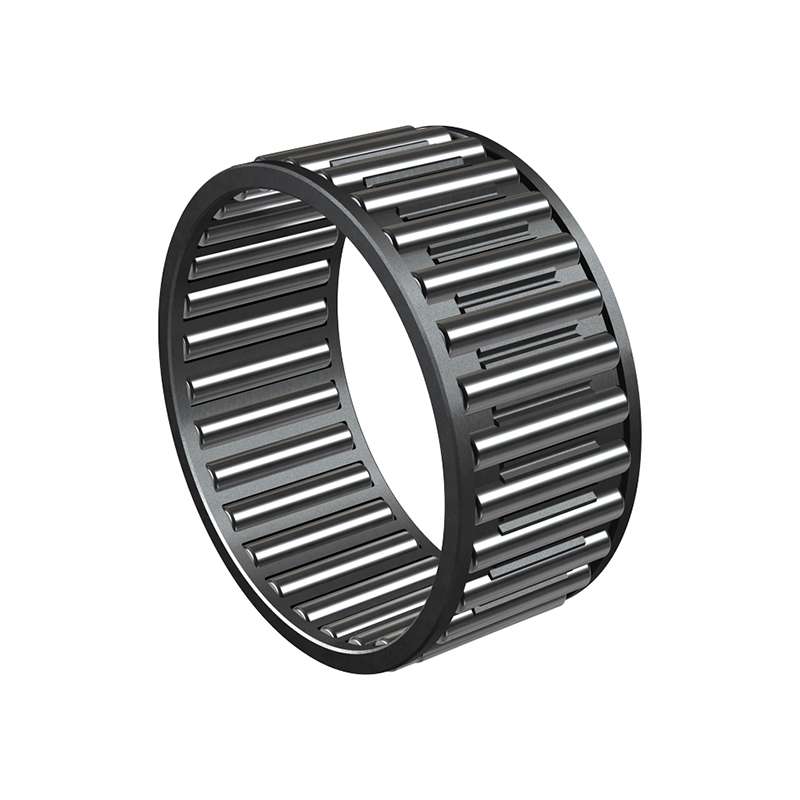
Plastic Cage
Reduces weight and offers chemical resistance, suitable for applications where weight is a concern or electrical insulation is needed.
Features of Needle Roller Bearings
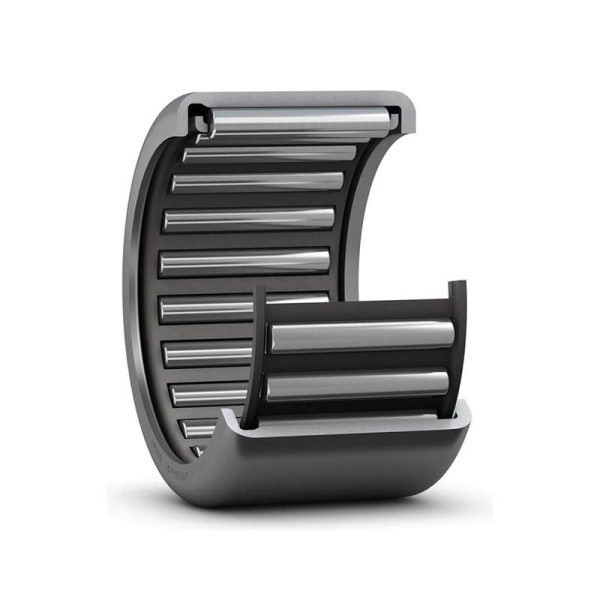
1.High Length-to-Diameter Ratio: Needle roller bearings have slender cylindrical rollers with a significantly higher length-to-diameter ratio than other roller bearings, providing excellent load-carrying capacity in limited space.
2.Compact Design: The compact size of needle roller bearings makes them suitable for applications with constrained radial space and where a compact, lightweight solution is essential.
3.Limited Axial Load Capacity: Needle roller bearings are primarily designed for radial loads, and while they can accommodate some axial loads, their axial load capacity is comparatively lower than radial.
4.Effective in Oscillating Motion: Needle roller bearings demonstrate effectiveness in applications involving oscillating motion, showcasing a unique capability compared to some other bearing types.
5.High Surface Area Contact: Needle roller bearings exhibit a concentrated line contact between the rollers and the raceways, creating a high surface area contact. This design enhances load distribution and contributes to their ability to handle heavy radial loads.
Advantages of Needle Roller Bearings
1.Low Sectional Height: Enables compact designs in space-restricted applications.
2.High Stiffness: Withstands deflection and deformation under load effectively.
3.Low Bearing Mass: Offers a lightweight solution without compromising load capacity.
4.Excellent Oscillation Performance: Performs reliably in applications with oscillating motion.
5.Accommodation of Thermal Expansion: Allows axial movement, accommodating thermal changes in the system.
6.Cost-Effective: Economical in applications with moderate loads and space limitations.
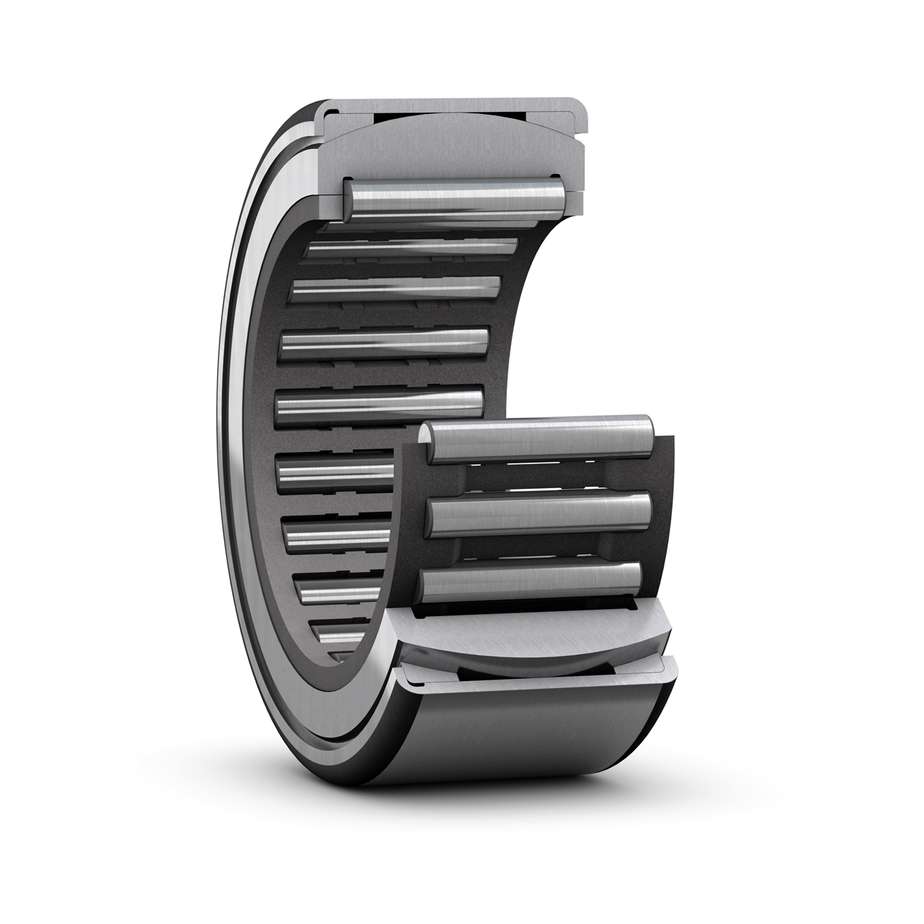
Applications of Needle Roller Bearings
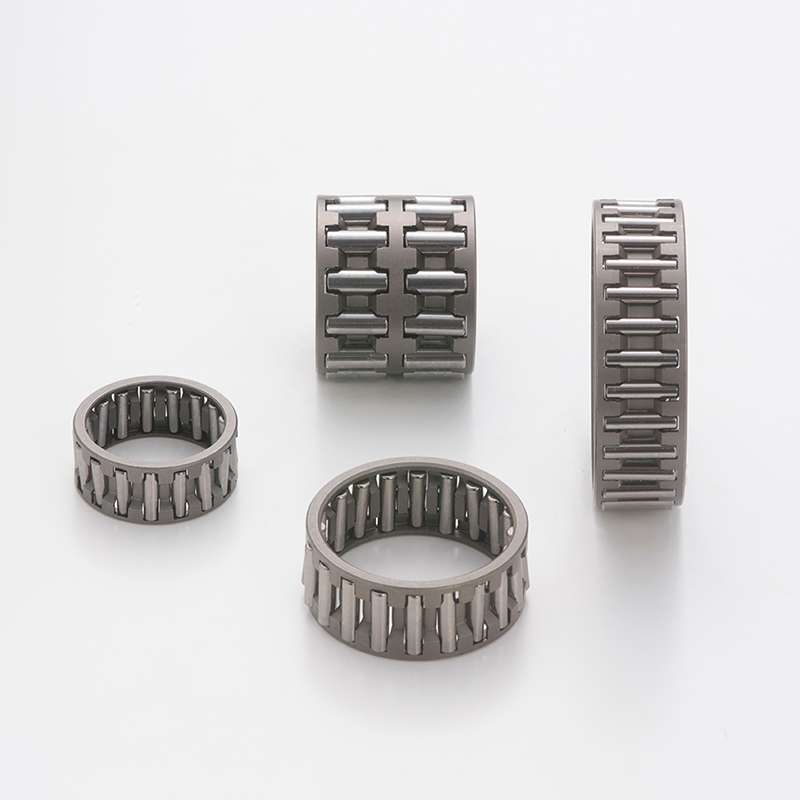
- Automotive Transmissions: Used for efficient support in compact spaces within gearboxes and transmissions.
- Aerospace Systems: Applied in aircraft components like actuators, landing gear, and control systems due to their lightweight and high-load capacity.
- Industrial Gearboxes: Ensures smooth and precise motion in machinery and equipment used in manufacturing and processing industries.
- Textile Machinery: Employed in spinning and weaving equipment for their compact design and high load-carrying capacity.
- Medical Devices: Utilized in precision medical equipment, such as surgical instruments and scanning devices, for smooth and controlled movement.
- Electric Motors: Found in electric motors to support shafts and rotors with low friction and high radial load capabilities, enhancing motor efficiency.
Key Manufacturing Process of Needle Roller Bearings
Raw Material Preparation: High-quality alloy steels are melted and cast to form the raw material.
Forging or Ring Rolling: The raw material is shaped into the initial bearing components through processes like forging or ring rolling.
Turning and Grinding: Precision machining refines inner and outer rings, removing excess material and achieving precise dimensions.
Heat Treatment: Crucial for enhancing hardness and toughness, processes like quenching and tempering optimize mechanical properties.
Assembly: Components, including inner and outer rings, tapered rollers, and cages, are assembled with precision, often including lubrication.
Surface Treatment and Coating: Treatments such as nitriding or carburizing, along with coatings, enhance resistance to corrosion and wear.
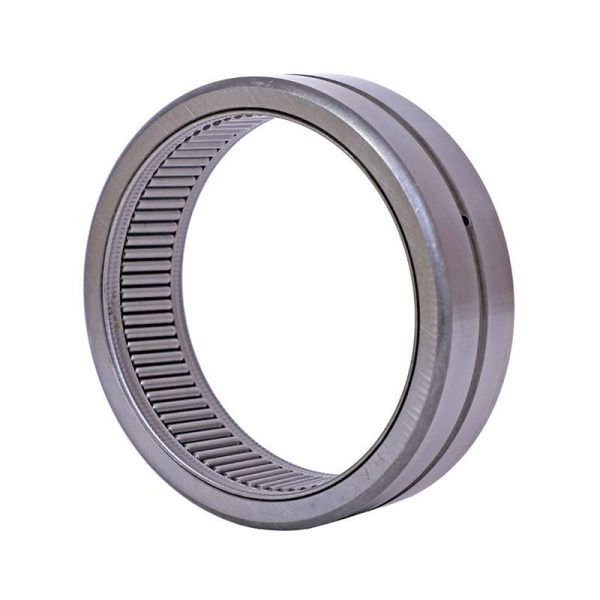
FAQ - Frequently Asked Questions
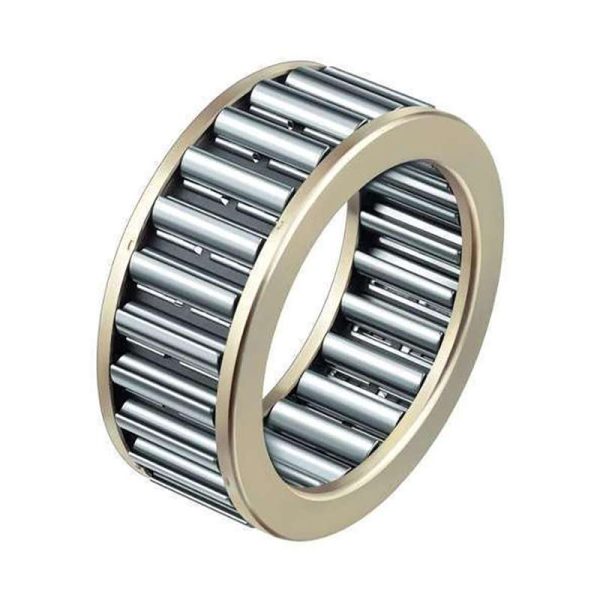
A tapered roller bearing is a type of rolling-element bearing that consists of inner and outer rings with tapered raceways and tapered rollers. The design allows for efficient handling of both radial and axial loads.
Tapered roller bearings offer high load-carrying capacity, durability, and the ability to handle both radial and axial loads. Their design also facilitates efficient distribution of forces, reducing friction and heat generation.
Tapered roller bearings differ from other bearings in their design, featuring tapered raceways and rollers. This design is particularly effective for applications with combined radial and axial loads.
Tapered roller bearings are widely used in various industries, including automotive (wheel bearings), industrial machinery, construction equipment, and aerospace applications.
Tapered roller bearings are typically lubricated with grease or oil. Proper lubrication is crucial for minimizing friction, reducing wear, and ensuring smooth operation.
Preload is the application of a controlled axial force to the bearing during installation. It eliminates play between components, reducing internal clearances and enhancing bearing stiffness and performance.
Tapered roller bearings are usually mounted by applying force on the inner ring or using specialized tools. Careful attention to alignment and preload is essential for proper installation.
Regular inspection for signs of wear, proper lubrication, and monitoring of operating conditions are crucial for tapered roller bearing maintenance. Replacement is necessary if significant wear or damage occurs.
While tapered roller bearings are less tolerant of misalignment compared to some other bearing types, they can still accommodate limited misalignment. However, proper alignment during installation is recommended for optimal performance and longevity.
Consider factors such as load conditions, speed, operating temperature, and required precision. Consult with bearing manufacturers or engineers to ensure the selected tapered roller bearing meets the specific needs of your application.
Installation and Maintenance
Installation
- Clean the Components: Ensure that all components, including the housing, shaft, and bearing surfaces, are thoroughly cleaned of any contaminants such as dirt, dust, or old lubricants.
- Verify Shaft and Housing Dimensions: Check the dimensions of the shaft and housing to ensure they meet the specified tolerances. Proper fits are essential for the correct functioning of the tapered roller bearing.
- Apply Lubrication: Coat the bearing components with the appropriate lubricant before installation. Lubrication helps minimize friction, reduces wear, and ensures smooth operation of the bearing.
- Mount the Inner Ring: Carefully slide the inner ring onto the shaft, ensuring that it is aligned with the shaft axis. Avoid any damage to the bearing surfaces during this process.
- Install the Outer Ring: Similarly, mount the outer ring into the housing, aligning it properly. Take care to prevent damage to the outer ring surfaces.
- Set Preload or Clearance: Depending on the application requirements, set the preload or clearance by applying the appropriate axial force. Preload improves stiffness and eliminates play, while clearance allows for thermal expansion.
- Secure in Place: Secure the bearing in place by properly tightening the fasteners, such as bolts or nuts, on the housing. Follow the recommended torque values provided by the manufacturer to avoid over-tightening or under-tightening.
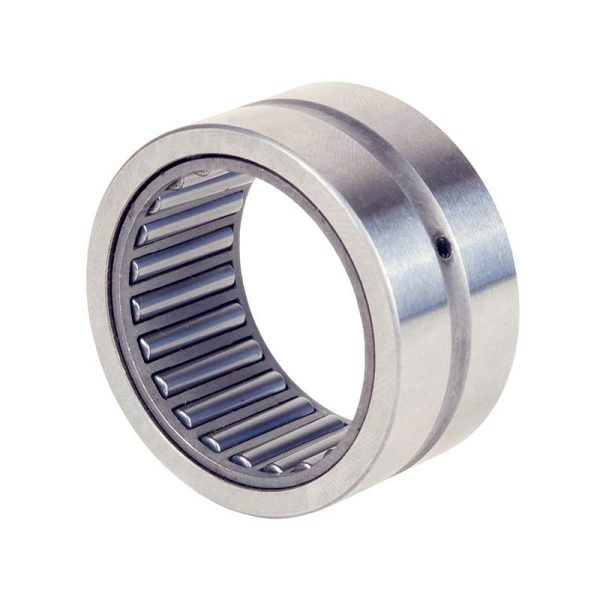

Maintenance
- Regular Inspection: Periodically inspect for wear, damage, or contamination. Unusual noises during operation may signal issues.
- Lubrication Checks: Regularly monitor lubrication levels, ensuring the right type and amount. Inadequate lubrication leads to premature wear.
- Temperature Monitoring: Check operating temperatures regularly. Abnormal increases may indicate lubrication or alignment problems.
- Re-Greasing: Follow manufacturer-recommended intervals for re-greasing. Clean old grease before applying new lubricant.
- Alignment Checks: Ensure proper shaft and housing alignment to prevent excessive loads and premature failure.
- Handling Misalignments: If misalignments are unavoidable, consider using bearings designed for misalignment or incorporate mechanisms to reduce its impact.
- Replacement of Worn Bearings: Promptly replace bearings showing significant wear, damage, or reduced performance to prevent further equipment damage.

